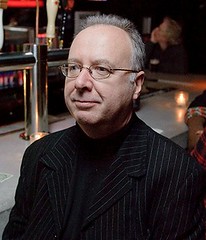 Kim Davis.
Kim Davis.I moved to the East Village – in fact to Alphabet City, as it was then called – when my daughter was a year old. All her schooling has been here (she’s in middle school now) and as a parent I’ve been happy with every bit of it. I share the surprise expressed by some residents in The Local’s report Monday. I just don’t recognize my daughter’s school in the Department of Education’s findings.
East Village education began for her at the Emmanuel Day Care center on Sixth Street, with its smart, friendly and in some cases very long-serving staff. I was staggered by the Center’s ambition, watching them introduce pre-schoolers not only to reading and writing, but sophisticated math and science topics.
I had always assumed she would progress from there to P.S. 364, a nearby public school. Her mother had ideas about a private Catholic education. Thankfully we never had to debate it. One day, browsing among the stalls at the Loisaida street fair, we came across flyers for an all-girl charter school, not yet open. At the time I had no idea what a charter school was, although I did notice that it was free. I think we all know about charter schools now, and the debates about sharing space with city schools, about non-unionized teaching staff, and the lottery admission system – but that’s another story.
Anyway, that’s where my daughter went – Girls Prep on East Houston – and she’s been happy and successful there ever since. I read the report card with amazement. A and B for environment and student performance, a C score overall, but F for student progress. As a parent, I shrug my shoulders. (Full disclosure: her mother is employed by the school as a teaching assistant; she’s usually more critical of it than I am.)
The report card doesn’t really explain how this was measured. My daughter and her sharp, alert, articulate friends are making plenty of progress as far as I can see. It just makes me nervous for the school and the staff. Monitoring school performance is a great idea. Clarity and transparency in the reporting could be improved.
For what it’s worth, P.S. 364 got an overall D.
Kim Davis is the community editor of The Local East Village.
Tell us how you feel about the latest evaluations of neighborhood schools.







